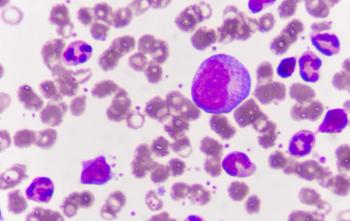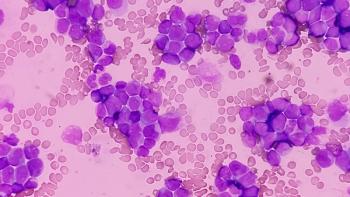
Q&A: Strong Treatment Choices Can Build Trust in Patients With ESR1+ mBC
Selecting the right treatment path for a patient with an ESR1 mutation in metastatic breast cancer can help build trust.
Providers may face difficult decisions when choosing a second-line treatment option for patients with hormone receptor (HR)–positive, HER2-negative metastatic breast cancer (mBC) who have developed ESR1 mutations, according to Kimberly Podsada, BSN, RN, MSN, NP-C, CNS.
After moderating a Community Case Forum with Oncology Nursing News, Podsada explained that these decisions are guided by a patient’s history and what adverse events (AEs) providers may want to avoid, but could also be influenced by what treatments a provider is most comfortable with.
Podsada, a nurse practitioner at the University of California San Francisco Comprehensive Breast Health Center, said in an interview following the event that some advanced practice providers in attendance from community clinics reported that their providers more often chose treatment paths with more established efficacy data, whereas those at academic institutions may be more inclined to personalize treatment decisions.
Oncology Nursing News: How might treatment paths differ between patients with ESR1-mutated HR-positive, HER2-negative mBC?
Podsada: Some of it depends on if they’ve seen other targeted therapies. I know that CDK4/6 inhibitors tend to be the preferred first line. There are other mutations that we can target. It really varies from provider to provider which next targeted therapy they decide to recommend for the patient. [Does the patient] have a PI3KCA mutation? Do they have an ESR1 mutation? Are they symptomatic and in visceral crisis, and maybe you go to chemotherapy?
You have to, of course, talk with the patient about what their options are and what the [AE] profiles are, but as the provider, you need to really be able to make a strong recommendation so that there’s that trust building that you continue to work on with your patient. It depends on if there are other mutations to target. It depends on what the patient’s willing to do, and thinking about next-line treatments, always, for someone who’s metastatic. Some of the sequencing questions are still not clear, so we kind of have all of these options, and we choose the best one at that time, but we’re not closing the door on the other ones.
The co-mutations are challenging. I know that there [are] some newer indications of combination therapy targeting both mutations. However, I still find that a lot of providers will choose one or the other with concerns of toxicity profile. It is so highly varied among providers whether they’re going to put someone on apelisib (Piqray) or capivasertib (Truqap) versus elecestrant. It’s really hard to say it. It is so provider-driven.
How did community providers report handling these types of treatment sequencing decisions in the Community Case Forum?
They have first line treatments that they’re comfortable with. That’s what they want to stick with. And many of the of the participants did describe that, “Yes, my oncology attending does understand there are other options and knows the data but still is sticking with what they’re comfortable with,” and I think we’re still waiting on some mature data to really even say that one is better than the other, first line then second line, or switching CDK4/6 inhibitors, or switching endocrine therapy partners. But most of it really seemed like they were [doing] what was most comfortable for them.
Some of the academics, people at academic institutions, they may have gone to a [PI3K] inhibitor first, vs an elacestrant. That might have been even just because of their preference, what they’ve seen in the data, as far as what’s going to give them the most benefit right now for their patient, right?
What factors contribute to hesitation toward SERDs or certain CDK4/6 inhibitors outside of a provider’s comfort zone?
In the adjuvant setting, it’s fairly clear. In the metastatic setting, we still have data that supports certain CDK4/6 inhibitors over the other but I really can’t say that there is a wrong answer in the metastatic setting, and I know that that may go against the grain of certain providers, but I feel that it’s best to give the patient a medication that we know has efficacy and safety data proven and is tolerable, and that seems to be the comfort zone for a lot of providers. I think that we could, of course, do comparisons, but we don’t have a head-to-head study, so you can’t really say one is better than the other in this setting.
This transcript has been edited for clarity and conciseness.
Newsletter
Knowledge is power. Don’t miss the most recent breakthroughs in cancer care.
















































































